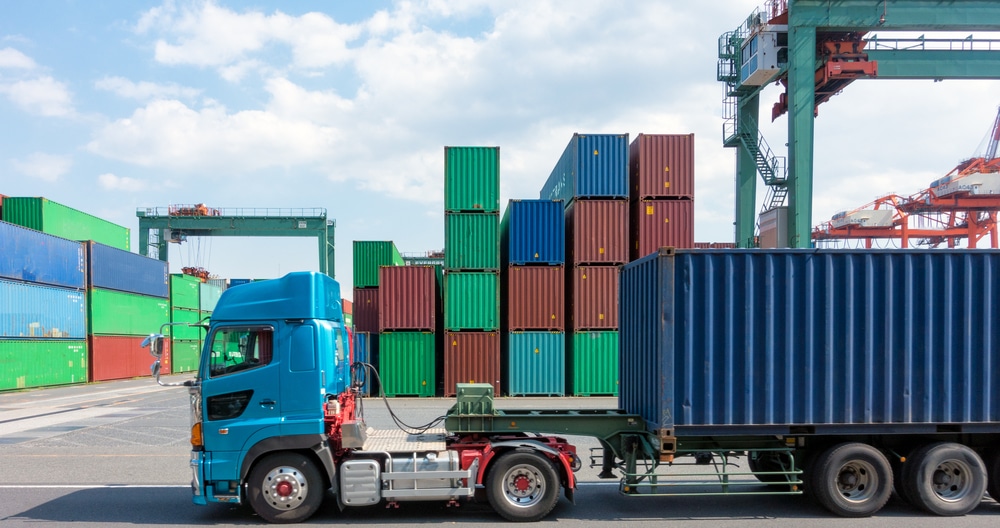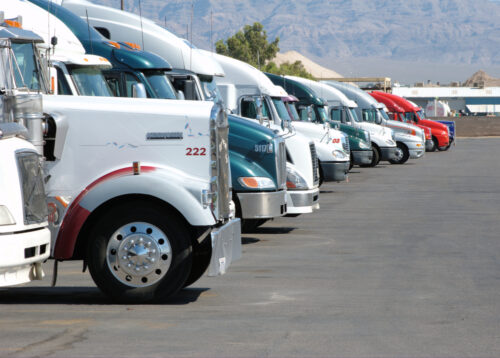Drayage vs Cartage: Key Differences

Commercial shipping relies heavily on two essential methods for moving freight: drayage and cartage services. Each plays a distinct role in guiding goods to their final destination, from a port to a nearby facility or across short distances within a city.
Though they serve similar purposes, the differences between drayage vs cartage are significant, and choosing the exemplary service can significantly affect the efficiency of supply chain operations.
This guide will explore these methods in detail, helping you understand when each is most effectively utilized to optimize your logistics strategy.
What is Drayage?
Drayage is a specialized transportation service that moves freight short distances, often within the same metropolitan area. It plays a crucial role in the supply chain, bridging the gap between longer transportation services and the final destination of goods.
Drayage services are typically used for container drayage, where shipping containers are transported from ports to rail yards or distribution centers before standard freight shipment. One of the essential types is shuttle drayage, which involves frequent back-and-forth trips between multiple destinations.
This process is essential for freight transportation, ensuring that goods are efficiently moved from their arrival point to where they’re needed for customs clearance or onward shipping.
To learn more, see our full guide on Drayage.
Drayage Pros and Cons
Drayage plays a pivotal role in logistics and supply chain, offering specific advantages and challenges. Here are the top benefits and drawbacks of using container drayage trucks for freight transportation:
Pros
- Reduced Risk of Damaged Goods: Drayage services ensure containers are only opened at the destination, greatly reducing the risk of damage during transit.
- Improved Security of Merchandise: Minimal handling during drayage significantly lowers theft risks, potentially decreasing insurance premiums due to enhanced security measures.
- Expedited Drayage Options: Expedited drayage services facilitate quick freight movement for urgent deliveries, improving supply chain efficiency and meeting tight deadlines.
Cons
- Unsuitable for Small Shipments: Drayage is most efficient for moving entire containers or bulk loads, making it less cost-effective for smaller, less-than-container loads, which may require alternative shipping methods.
- Increased Harbor Costs: Extended stays in port due to delays can escalate dock dues, making drayage more expensive. Large ships also necessitate deepwater ports, adding to the costs.
- Dependency on Infrastructure: Drayage efficiency relies on suitable roads, bridges, and rail networks, making it unsuitable for areas with less developed infrastructure.
What is Cartage?

Cartage refers to transporting goods over short distances, typically within the same city or metropolitan area. Unlike drayage, which often deals with moving containers from ports or rail yards, cartage focuses on delivering freight directly to its final destination, such as a distribution center or customer’s doorstep, after clearance from the freight forwarder.
This method is ideal for smaller shipments that don’t require large dray trucks or chassis trucks. Cartage services employ box trucks or vans, making them versatile options for businesses needing to move cargo quickly and efficiently across short distances.
With cartage, companies can ensure the timely delivery of consumer goods, raw materials, and more, crucial in maintaining a smooth and responsive supply.
Cartage Pros and Cons
Cartage efficiently addresses the logistics needs for short-distance freight transportation. Here are the benefits and drawbacks:
Pros
- Flexibility for Short Distances: Cartage excels in agility, perfect for quick, local deliveries. Its adaptability helps businesses swiftly meet consumer needs.
- Cost-Effective for Smaller Shipments: For less voluminous cargo, cartage proves more affordable than drayage, optimizing logistics costs for businesses.
- Reduces Handling and Increases Safety: Fewer mode changes in cartage mean less cargo handling, decreasing the risk of damage and enhancing safety.
Cons
- Limited to Metropolitan Areas: Cartage works best within city limits, less effective for longer routes, restricting its use for broader distribution efforts.
- Capacity Constraints: Suited for light loads, cartage may not handle large volumes well, posing challenges for businesses with hefty freight demands.
- Traffic Dependencies: Cartage services hinge on road conditions; traffic jams can delay deliveries, affecting timelines and overall supply chain flow.
Key Difference Between Cartage and Drayage
Understanding the critical differences between drayage and cartage is crucial for selecting the right freight transportation method. Here are the key distinctions that set them apart:
Classifications
Unlike cartage, drayage is categorized by the Intermodal Association of North America (IANA) into six types, including inter carrier drayage, intra carrier drayage, and shuttle drayage. These classifications help manage container shipments across various stages of the supply chain, from pier drayage at ports to door-to-door drayage for final delivery.
Handling
Similarly, the handling of cargo differs notably. Drayage services often involve moving entire containers without opening them until the final destination, minimizing handling. In contrast, cartage might require multiple handlings, especially when distributing freight to multiple locations within a city.
Documentation
Drayage requires specific documentation like the Bill of Lading for container shipments, reflecting its role in international and intermodal transport. Cartage, focusing on local deliveries, often deals with simpler documents, such as delivery receipts and cartage advice slips, highlighting the difference in scale and scope between the two services.
Distance and Scope
A key distinction lies in their operational scope. Drayage typically covers short distances within or between ports and rail yards, focusing on moving freight to a distribution center or a nearby facility for further transport. Cartage, however, is dedicated to the final leg of delivery, transporting goods directly to customers within local areas.
Drayage vs Cartage: Which One Should I Use?
Deciding between drayage and cartage depends on your shipment’s specifics. Use drayage for transporting entire containers from ports to distribution centers, which is suitable for intermodal shipments. It’s ideal when handling large, international cargo needing minimal handling.
Cartage is perfect for last-mile deliveries within urban areas, especially for smaller shipments to customers or businesses. The choice between drayage and cartage hinges on your freight’s volume, destination, and how quickly it needs to arrive.
Final Thoughts
Drayage and cartage are essential in shipping, each suited for different needs. Drayage moves freight from ports to distribution centers, ideal for large, intermodal shipments. Cartage handles last-mile deliveries within urban areas, perfect for smaller, local shipments.
Armed with the insights from this drayage vs cartage guide, you’re ready to make savvy, cost-effective shipping decisions, optimizing your supply chain with the right transportation method.
